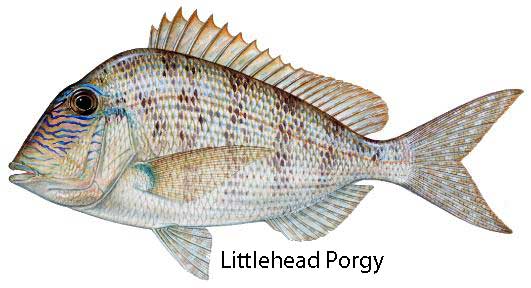
LITTLEHEAD PORGY

Calamus proridens
English: Littlehead Porgy
Spanish: Plumajoroba
Littlehead porgy have a compressed, deep body that is somewhat circular in shape. They have a distinct hump on the back just before the dorsal fin. The tail fin is deeply forked, and the head, as their name suggests, is small and ends in a short snout. They have a small mouth, a fairly long pectoral fin and two, connected dorsal fins, the first with spines and the second with soft rays.
Littlehead porgy are an inshore and near shore species that are mostly found over sponge and coral bottom, usually hugging close to the bottom. Though young Littlehead porgy are found in shallow waters near shore, adult Littlehead porgy are almost always located further out to sea.
Fishing methods include Drifting or Still Fishing with light spinning and baitcasting tackle and multiplying reel, with live or dead shrimp and various cut baits. Littlehead porgy are known for their good fighting qualities despite their relatively small size. They are also known to be quick to take a hook, though most are caught accidentally while fishing for other species. Like most porgies, they are usually caught with bottom fishing techniques. A two- or three-hook bait rig using worms (either sand or blood), squid, shrimp or clams as bait is a common and effective approach.
The little-head porgy, though small in size, is equally as voracious as the other porgies, and is well worth catching if only to admire its beauty. It is of similar habits to the other porgies, and found with them, but is less common. It is a good pan¬fish, growing only to 6 or 8 inches in length.